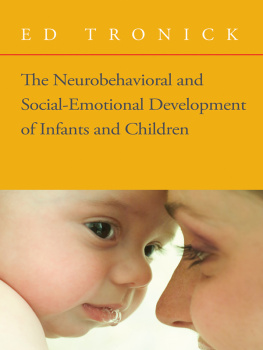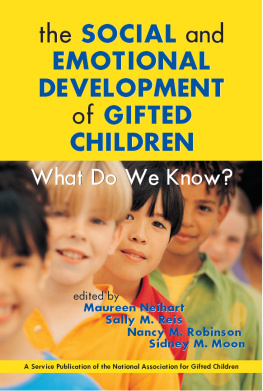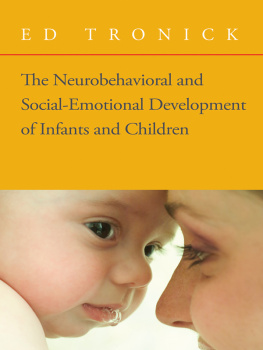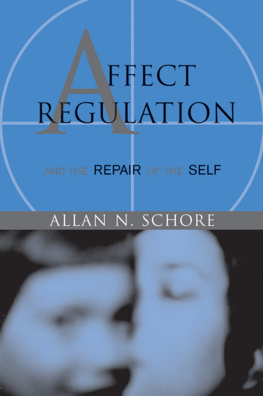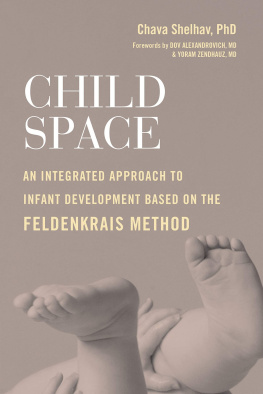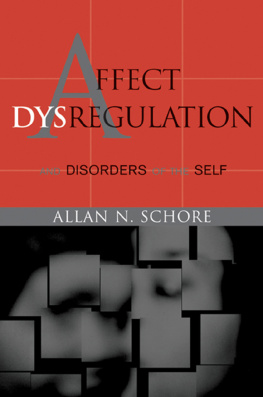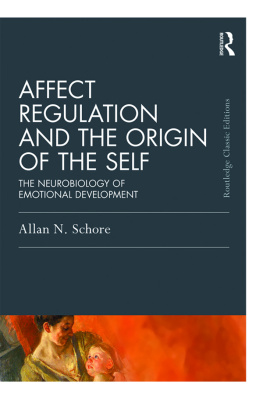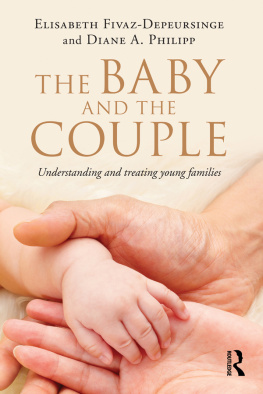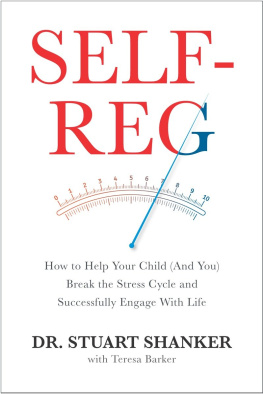
The Norton Series on Interpersonal Neurobiology
Allan N. Schore, Ph.D., Series Editor
Daniel J. Siegel, M.D., Founding Editor
The field of mental health is in a tremendously exciting period of growth and conceptual reorganization. Independent findings from a variety of scientific endeavors are converging in an interdisciplinary view of the mind and mental well-being. An interpersonal neurobiology of human development enables us to understand that the structure and function of the mind and brain are shaped by experiences, especially those involving emotional relationships.
The Norton Series on Interpersonal Neurobiology will provide cutting-edge, multidisciplinary views that further our understanding of the complex neurobiology of the human mind. By drawing on a wide range of traditionally independent fields of researchsuch as neurobiology, genetics, memory, attachment, complex systems, anthropology, and evolutionary psychologythese texts will offer mental health professionals a review and synthesis of scientific findings often inaccessible to clinicians. These books aim to advance our understanding of human experience by finding the unity of knowledge, or consilience, that emerges with the translation of findings from numerous domains of study into a common language and conceptual framework. The series will integrate the best of modern science with the healing art of psychotherapy.
A NORTON PROFESSIONAL BOOK
The Neurobehavioral and
Social-Emotional Development
of Infants and Children
ED TRONICK

A Norton Professional Book
Please note that the e-book version of this title does not include the audio CD.
For Pearl
Contents
The Neurobehavioral and
Social-Emotional Development
of Infants and Children
Why are some infants, children, and adults happy and robust and others sad and withered? How are mothers and infants similar to and different from therapists and patients? What are the developing infants capacities for neurobehavioral self-organization? How are early infantadult interactions organized? How are self- and mutual regulation related to developmental processes? Is there a process that can explain normal as well as abnormal development? Is the process of meaning making, in which humans make sense of themselves in relation to the world, only in their heads, or is it in their bodies as well? This broad set of questions is addressed and looped back to in this book, which compiles my writing and thinking over the past 30 years.
A central goal of this book is to present my Mutual Regulation Model (MRM) of infantadult interaction. The MRM sees infants as part of a dyadic communicative system in which the infant and adult mutually regulate and scaffold their engagement with each other and the world by communicating their intentions and responding to them. This book presents my thinking and research that led to the MRM and its elaboration into ideas about meaning making, biopsychological states of consciousness, and how they are expanded in engagement with others and the world.
From my first studies of infants ducking to avoid virtual objects on a collision course with them (Ball & Tronick, 1971; see ), the focus of my research has been on the nature of how people live in the world and how they change both themselves and their relation to the world over moments, hours, days, and years. My aspiration is to develop a theory that has the qualities of being experientially-near and clinically authentic, broad and integrated, and developmental and culturated at its core. This goal is hardly in handit is a work in progressbut I offer this version of the theory as one step in an ongoing effort towards its development.
PSYCHOBIOLOGICAL STATES OF CONSCIOUSNESS
My organizing idea is, as Bruner (1990) stated, that humans are makers of meaning about their relation to the world. They are purposeful. This idea of private meaning is explored in theories as divergent as psychoanalysis to Socratic exploration in cognitive-behavioral theory. My MRM theory weds Bruners view of humans as meaning-makers with dynamic systems theory. It sees humans as complex systems, as hierarchical multileveled psychobiological systems that constantly work to gain energy and meaningful information to make sense of their place in the world. This sense-of-oneself in the world equals the totality of meanings, purposes, intentions, and biological goals operating in every moment on every component and process at every level of the system from molecules to awareness.
The Sense-of-Oneself in the World
This totality of meanings can be conceptualized as a psychobiological state of consciousness. A state of consciousness (the whole of an individuals self-organization) guides an individuals engagement with others, with the world of things, and with their engagement with themselves. To use Walter J. Freemans phrase, consciousness is how individuals thrust themselves into the world (Freeman, 2000). Of course, as psychobiological states, states of consciousness are not unique to humans, but in humans they contain unique species-specific qualities of human meaning making processes and experience. And parenthetically, the lack of consideration of species-specific qualities is what renders fallible arguments about chimpanzees or any other animal having awareness and consciousness equivalent to humans. Certainly they may have consciousness, but it is a chimpanzee form of consciousness, not a human form.
The private meaning of ones place in the world can be thought of as a psychobiological state of consciousness, an assemblage of the totality of meanings, purposes, intentions, and the like, from every component of the multiple levels of organization and functioning of the individual. Using the term consciousness can be misleading, for in my usage it does not imply that the individual is aware of the private meaning. Rather, the private meaning is inherent in the organization of the flow of an individuals psychobiological state as he or she acts in the world.
To capture what I mean by a state of consciousness , consider the multilevel cascade of meaning, both in and out of awarenessincluding emotions and thoughts, perceptions and actions, as well as feelings in your arms, feet, gut, and handsas the wash of adrenalin flows through you when your plane is thwacked and shaken in flight by mother nature punishing humans hubris, because we all know it is impossible for something so big to fly. The multilayered totality of this state of consciousness is not and could not be completely in awareness. Indeed, much of being in the world is out of awareness, including most of the processes that produce experience. And we must not forget that states of consciousness and awareness for that matter are not singular concepts but rather broad terms referring to many forms of consciousness and awareness: reflective alertness, preconscious, unconscious, dynamic unconscious, reverie, daydreaming, the multiple states of sleep, meditation, and mindfulness, and even the biologically-oriented physiologic, neurologic, endocrine, and other somatic states. The knowing in a state of consciousness is like Bollass unknown known (Bollas, 1987). However, there is even more that is unknown, because what is unknown is not only in the un- or preconscious. The unknown is also in and of our biopsychological organization and the processes that generate meaning, much of which are not available to consciousness. But no little internal observer is needed to catch the meaning; it is inherent in our biopsychological state of consciousness.
Next page
